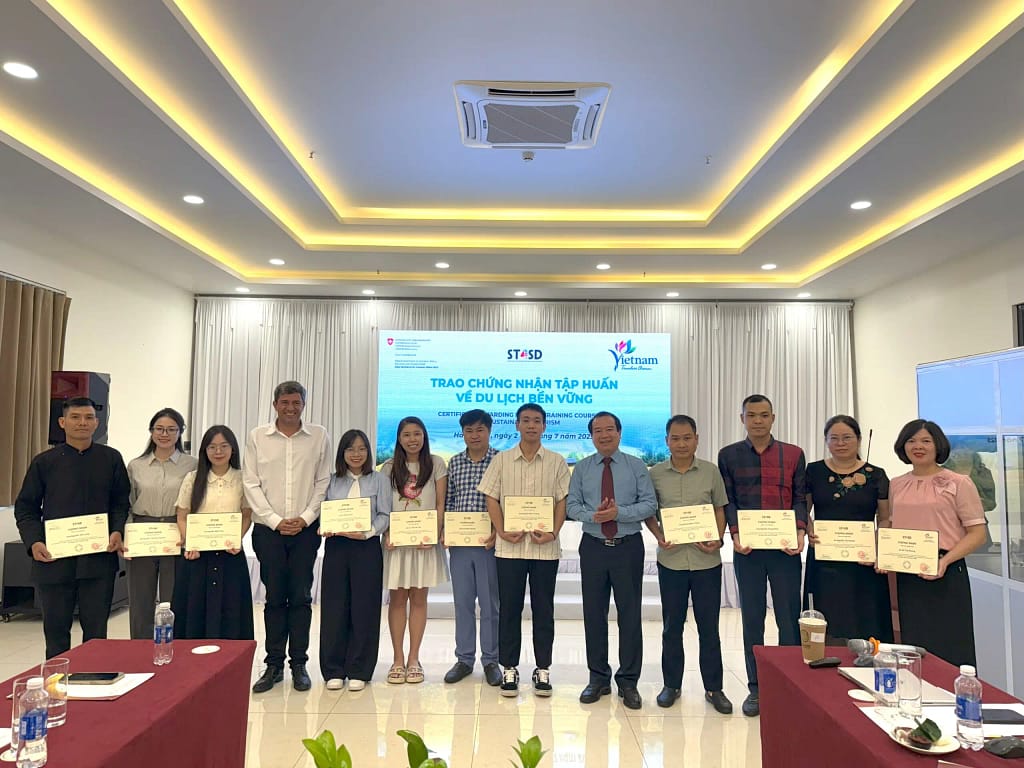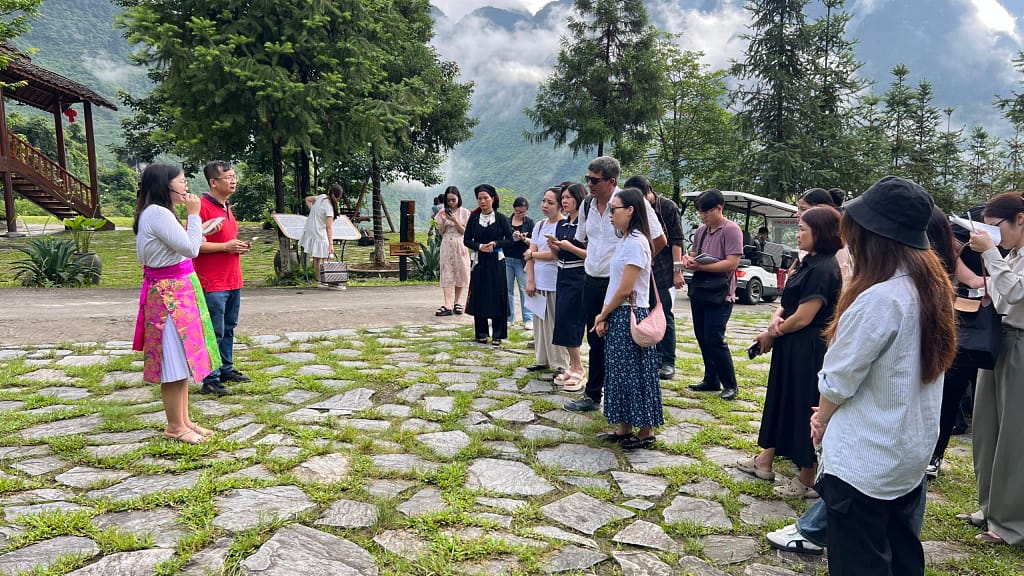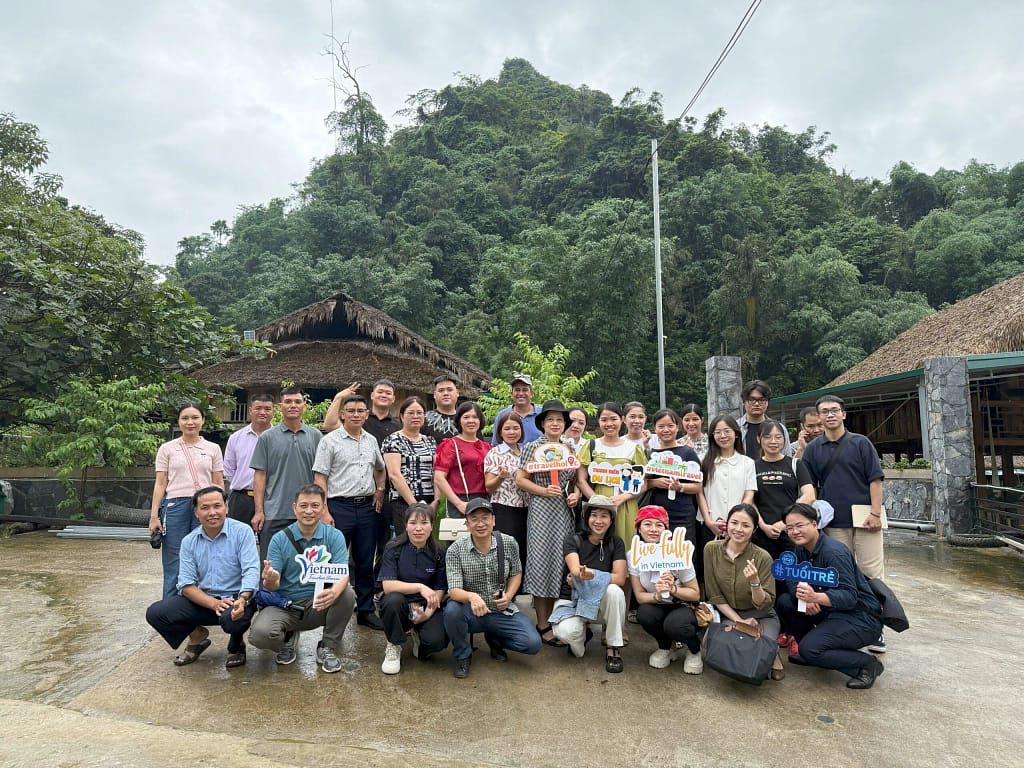Following up on the previous update, the three-day sustainable tourism training course held in Hà Giang (now part of Tuyên Quang province) from July 2–4, 2025, offered a rich blend of theory and practice tailored for professionals and local actors in the tourism sector. The program served not only as a platform for knowledge transfer but also as a catalyst for transforming how tourism is planned, managed, and experienced at the grassroots level.

A Program Designed for Real-World Application
Led by Dr. Đỗ Trần Phương, Vice Dean of the Faculty of Tourism at Hanoi University of Culture, the training offered a well-structured blend of foundational knowledge, strategic insights, and hands-on approaches. The content was specifically crafted to reflect the needs of Hà Giang province and align with national and international sustainability goals.
The curriculum focused on four key areas of knowledge:
- Fundamental knowledge of sustainable tourism and sustainable tourism development:
Participants gained a strong understanding of core concepts and frameworks, including the definitions of sustainability, the Triple Bottom Line approach (economy–society–environment), and the VICE model (Visitors–Industry–Community–Environment). - Sustainable community-based tourism (CBT) – a strategic priority for Hà Giang:
The course explored what makes CBT successful and sustainable in remote areas, emphasizing local ownership, cultural preservation, environmental protection, and fair benefit-sharing mechanisms. Particular attention was paid to identifying and addressing the “5 available”, “5 missing”, and “5 conflicts” commonly found in CBT development in ethnic minority communities. - International and Swiss experiences and models in sustainable tourism development:
Drawing on case studies from Switzerland and other countries, participants learned about best practices in visitor management, eco-certification, capacity building, and market positioning. These insights were used to stimulate discussion on how to adapt successful models to the Vietnamese and Hà Giang context. - State management of sustainable tourism development in Hà Giang and Vietnam:
The course also addressed the role of government in creating enabling policies, coordinating stakeholders, monitoring environmental and social impacts, and supporting communities through training, infrastructure, and partnerships.
Field Visits: Learning from Living Examples
To bring theory into practice, the training included on-site visits to three representative CBT models:
- Hmong Village Resort (previously in the district of Quản Bạ): An ASEAN Green Tourism certified destination, showcasing responsible tourism infrastructure and community participation.
- Nặm Đăm Village (previously in the district of Quản Bạ): Known for its efforts in cultural preservation, ethnic minority leadership, and homegrown tourism management practices.
- Tha and Hạ Thành Villages (Hà Giang, now part of Tuyên Quang): CBT models integrating ecological awareness with traditional lifestyles, offering visitors immersive experiences with nature and local customs.
These excursions allowed participants to observe success factors firsthand, assess challenges, and exchange ideas directly with the communities involved.

Benefits Gained by Participants
By the end of the training, participants reported significant improvements in their understanding and capacity to act on sustainable tourism goals. Key takeaways included:
- Enhanced awareness of the principles and importance of sustainability.
- Ability to assess strengths and weaknesses in their communities and design tailored action plans.
- Practical tools for product development, marketing, and stakeholder engagement.
- Greater confidence in contributing to state-level planning and local-level implementation.
One participant remarked, “This course changed how I think about tourism. It’s not just an industry—it’s a way to build pride in our culture and take care of our land and people.”


Closing Reflections and Future Aspirations
At the end of the course, participants completed a final assessment and received certificates of completion. Many expressed hope that the lessons learned would not only stay with them but also ripple out through their communities.
Several participants proposed concrete follow-up actions, such as:
- Creating cultural visitor codes for their villages.
- Developing community-led weekend tourism events.
- Partnering more effectively with travel agents and NGOs.
These initiatives signal a readiness to put theory into practice and to lead tourism development from the ground up.
Looking ahead, participants voiced a collective desire to see similar training programs expanded to other provinces in the northern mountainous region. Given the shared socio-economic and geographic characteristics across these areas, the Hà Giang experience may serve as a scalable model for building capacity and resilience in Vietnam’s emerging destinations.